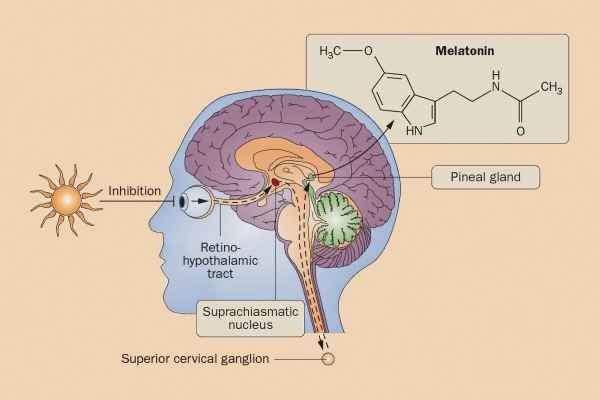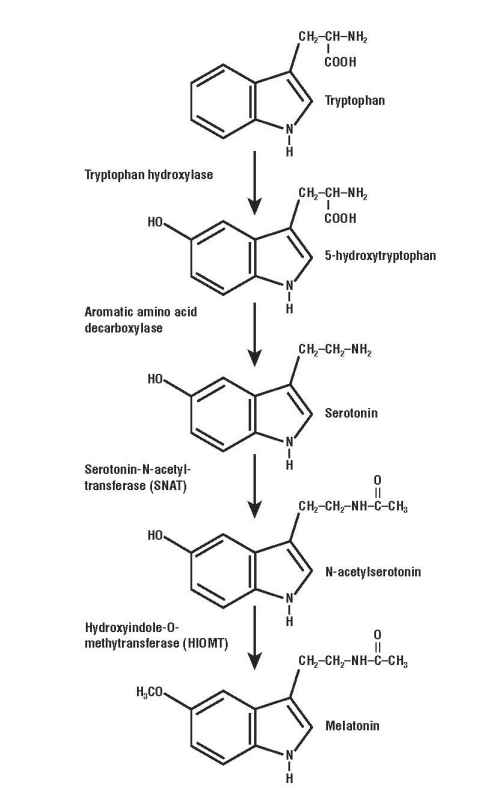Voluntary Sleep Deprivation #2: A Sight Suicide
Introduction
.png)
Effect of sleep deprivation to the eyes goes beyond the dark circle appearance beneath the eye (License: Public Domain]: Wikipedia commons
Staying awake all night long most times may be seen as a feat worthy of celebration, especially in situations where the tasks at hand were successfully completed. However, since all natural phenomenon have principles governing them; not sleeping when one should inevitably interfere with the biochemistry of sleep. Hence, since sight is a function of the eye, it is directly affected in the process of sleep deprivation.
The biochemistry of sleep

Effect of light signals Author: Kristin Harper
The human eye is triggered basically by respond to external light. This is why people find it much easier to stay awake in the day than in the night. According to Kristin Harper in the article The Science of Sleep, the human body release chemicals in a 24-hour cycle, nudging the body to do certain activities at different times. One of the most important chemicals released is melatonin.
From research, the release of the hormone melatonin from the pineal gland is found to be the reason why people feel sleepy. The most important thing about melatonin secretion is that it is controlled by the level of light signals reaching the area of the brain called suprachiasmatic nucleus.
In the day, light signals from the retina are passed to the suprachiasmatic nucleus. Once the suprachiasmatic nucleus is activated by the light, it stops the pineal gland from releasing melatonin. This is why people are able to stay awake in the day. Nevertheless, towards the evening when darkness sets in, the suprachiasmatic nucleus is gradually deactivated leading to release of melatonin. The amount of melatonin secretion becomes intensive depending on intensity of the darkness. This really explain why people get more drowsy late at night.
How is melatonin synthesized?

Synthesis of melatonin from tryptophan (License: CC BY-SA 3.0, Author: Krishnavedala]: Wikicommons
Actually what happens is that the pineal gland absorbs tryptophan from the bloodstream. Tryptophan is one of the α-amino acids used in making proteins. Tryptophan is grouped under essential amino acids, meaning that it can only be derived from diets.
Melatonin is thereby synthesized from this particular amino acid in a 4-step reaction.
The first step is the conversion of tryptophan to 5-hydroxytryptophan by the enzyme tryptophan hydroxylase.
The second step is the conversion of 5-hydroxytryptophan to serotonin by the enzyme aromatic amino acid decarboxylase.
The third step is the conversion of serotonin to N-acetylserotonin by the enzyme serotonin-N-acetyltransferase (SNAT)
The fourth step is the conversion of N-acetylserotonin to melatonin by the enzyme hydroxyindole-O-methyltransferase
Though all the reaction steps are crucial, however, the third step is the most important step when considering the biochemistry of sleep. In the day, light inhibits the enzyme serotonin-N-acetylyransferase (SNAT). Once SNAT is inhibited, melatonin can not be synthesized, hence individuals are able to stay awake. However, SNAT is very active in the dark leading to production of melatonin that makes one feel drowsy.
Effect of sleep deprivation on melatonin and the eye sight
As stated earlier, melatonin synthesis determining enzyme (SNAT) can only be active in the dark. It is worthy of note that artificial light in the night alters the normal functioning of this enzyme thereby making individuals to be able to stay awake.
The presence of light leads to the enzyme degradation and inactivation. This explains why people are able to stay awake at night while watching TV, chatting with phone, working on computers, etc. Inasmuch as it feels great to be able to stay awake all night. The action of the enzyme SNAT is altered in the process.
According to the Centre for disease control (CDC), an healthy sleep range is between 7-9 hours. Sleeping less than 5 hours will keep the enzyme SNAT active the next day, leading to secretion of melatonin. This is why people feel drowsy in the day.
Aside from finding it difficult to keep the eyes open the next day, sleep deprivation causes eye spasms, a condition that results in twitching of the eye. In rare cases, sleep deprivation over a long period could lead to loss of vision due to inflammation of the blood vessels in the eye (disease condition known as anterior ischemic optic neuropathy)
Summary
Just as sleep deprivation effects are very fatal to the brain; individuals practicing voluntary sleep deprivation are also indirectly destroying their sight and endangering their lives. From research statistics, aside from alcoholism, the increase rate of accident is as a result of the sleep deprived driver inability to stay awake while driving.
In the next installment of this series, we will be considering the effects of voluntary sleep deprivation on digestion. Thanks again for coming around. I hope you found this enlightening?. Till next time. Sleep well, stay healthy.
References
The Science of Sleep. Retrieved on 17th, May 2018.
Tryptophan. Retrived on 17th, May 2018
Effect of sleep deprivation to the eye. Retrieved on 17th May, 2018.
Image Sources
All images are from wikicommons licensed under creative commons and eligible for commercial use.
It is recommended to avoid any light source 1-2 hours prior to sleep but trust me, it is very difficult to practise hahaha. Great post btw !
With social media and the rest... It's close to being impossible hahaha. Thanks for reading.
I know right hahaha. Sleeping is always an issue but then most people take naps during the afternoon, so it's manageable